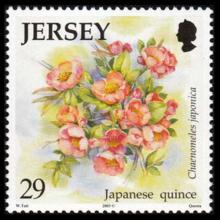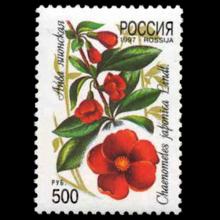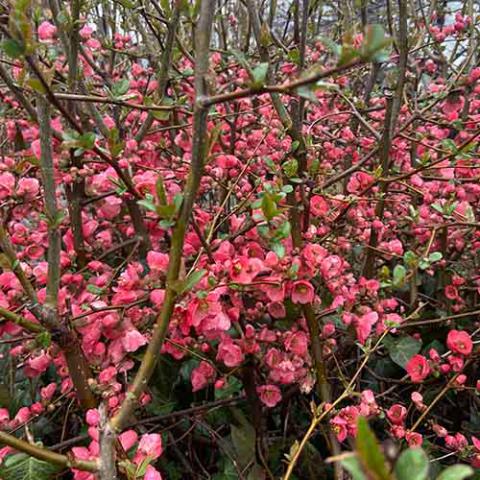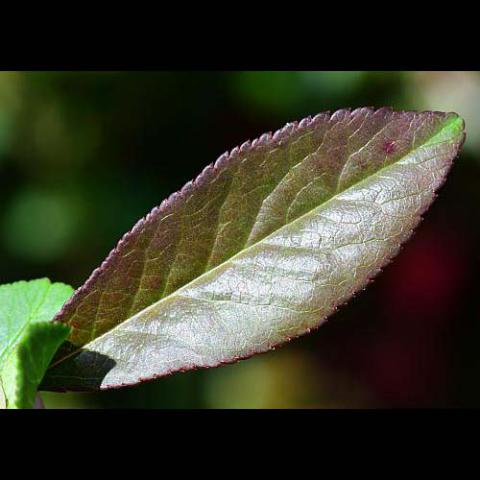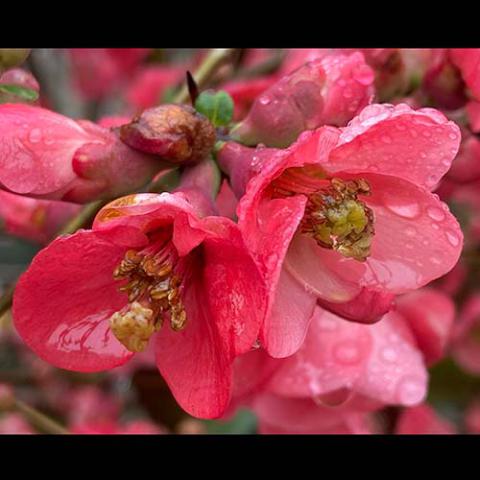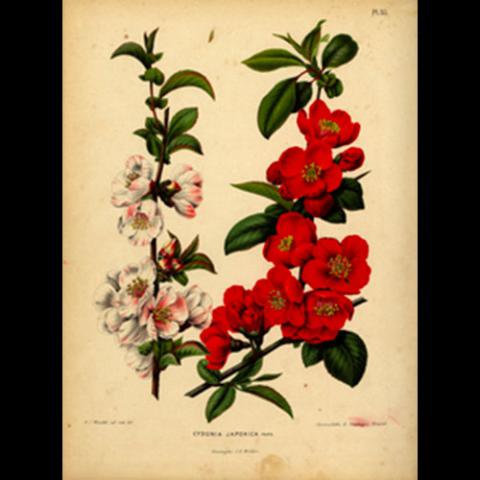NAME(S)
TAXONOMY
PLANTAE ID
THERAPEUTIC
Jersey
Issued:
Stamp:
Chaenomeles speciosa
Russia
Issued:
Stamp:
Chaenomeles speciosa
Poland
Issued:
Stamp:
Chaenomeles speciosa
Jersey
Issued:
Stamp:
Chaenomeles speciosa
Russia
Issued:
Stamp:
Chaenomeles speciosa
Poland
Issued:
Stamp:
Chaenomeles speciosa
Jersey
Issued:
Stamp:
Chaenomeles speciosa
Russia
Issued:
Stamp:
Chaenomeles speciosa
Poland
Issued:
Stamp:
Chaenomeles speciosa
Genus species (Plantae): Chaenomeles speciosa
Chaenomeles speciosa, the flowering quince, Chinese quince, or Japanese quince (in the context of traditional Chinese medicine known as zhou pi mugua), is a thorny deciduous or semi-evergreen shrub native to eastern Asia. It is taller than another commonly cultivated species, C. japonica, usually growing to about 2 m (6 ft 7 in). The flowers are usually red, but may be white or pink. The fruit is a fragrant but hard pome that resembles a quince.
It is in flower from February to June, and the seeds ripen in October. The species is hermaphrodite (has both male and female organs) and is pollinated by Bees. It is noted for attracting wildlife.
Cultivation
This plant is widely cultivated in temperate regions for its twining habit and its showy flowers which appear early in the season, occasionally even in midwinter. It is frequently used as an informal low hedge. Numerous cultivars with flowers in shades of white, pink and red have been selected.
Genus: Chaenomeles
Chaenomeles is a genus of three species of deciduous spiny shrubs, usually 1–3 m tall, in the family Rosaceae. They are native to Southeast Asia. These plants are related to the quince (Cydonia oblonga) and the Chinese quince (Pseudocydonia sinensis), differing in the serrated leaves that lack fuzz, and in the flowers, borne in clusters, having deciduous sepals and styles that are connate at the base.
The leaves are alternately arranged, simple, and have a serrated margin. The flowers are 3–4.5 cm diameter, with five petals, and are usually bright orange-red, but can be white or pink; flowering is in late winter or early spring. The fruit is a pome with five carpels; it ripens in late autumn.
Chaenomeles is used as a food plant by the larvae of some Lepidoptera species including the brown-tail and the leaf-miner Bucculatrix pomifoliella.
Synonym: Chaenomeles japonica
Reference: Wikipedia, Plants for a Future
Photos: Peter Needle

